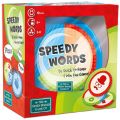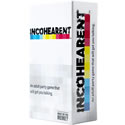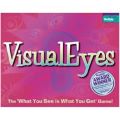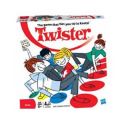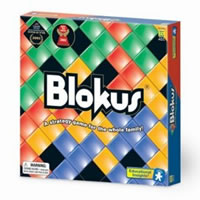
Official Blokus Rules
How To Play Blokus
2 - 4
Players
5+
Ages
30 MIN
Play Time
$22
Price
Blokus has become a popular game because it encourages creative and quick thinking. While playing Blokus you'll be faced with the challenge of getting all of your pieces onto the board. This sounds easy enough, but when you have other players that are trying to do the same thing, it can become quite the sticky situation.
 Oh, did we forget to mention there are rules about where you can place your pieces in the game of Blokus? Your pieces can't be played next to any of your other pieces, but they do have to be touching by at least one corner of a piece that has been placed on the board previously. The player that gets rid of all their pieces first wins Blokus. It's also possible for no one to be the winner of Blokus because there are no more available spots on the board.
Oh, did we forget to mention there are rules about where you can place your pieces in the game of Blokus? Your pieces can't be played next to any of your other pieces, but they do have to be touching by at least one corner of a piece that has been placed on the board previously. The player that gets rid of all their pieces first wins Blokus. It's also possible for no one to be the winner of Blokus because there are no more available spots on the board.
Some strategy might be to try and place your odd shapped pieces first so when the board gets filled up, the simple pieces are easier to place. Blocking other players is possible but harder than you think since they seem to always be able to sneak through your blockade. At the end of the game, it's always amazing to see how little of the game board is left open. Blokus is a great game that will vary each time you play. Be sure to try out Blokus today!
 Oh, did we forget to mention there are rules about where you can place your pieces in the game of Blokus? Your pieces can't be played next to any of your other pieces, but they do have to be touching by at least one corner of a piece that has been placed on the board previously. The player that gets rid of all their pieces first wins Blokus. It's also possible for no one to be the winner of Blokus because there are no more available spots on the board.
Oh, did we forget to mention there are rules about where you can place your pieces in the game of Blokus? Your pieces can't be played next to any of your other pieces, but they do have to be touching by at least one corner of a piece that has been placed on the board previously. The player that gets rid of all their pieces first wins Blokus. It's also possible for no one to be the winner of Blokus because there are no more available spots on the board.Some strategy might be to try and place your odd shapped pieces first so when the board gets filled up, the simple pieces are easier to place. Blocking other players is possible but harder than you think since they seem to always be able to sneak through your blockade. At the end of the game, it's always amazing to see how little of the game board is left open. Blokus is a great game that will vary each time you play. Be sure to try out Blokus today!
- The correct pronunciation for the game has a soft "o" sound. Making the word sound like "block us."
- Board Of 400 Squares
- 84 Pieces In Four Different Colors (21 Pieces Per Color)
- Official Blokus Game Rules And Instructions

Each player has to fit as many of his/her 21 pieces on the board as possible and have the lowest score.

Perparation: Each player selects a color and arranges their corresponding set of 21 pieces in front of their side of the board.
Game Play: The sequence of turns follows this order: blue, yellow, red, green. The initial piece placed by each player must cover a corner square. Subsequent pieces must connect to at least one other piece of the same color, but only at the corners. Pieces of the same color cannot touch along an edge. There are no limitations on how many pieces of different colors can be adjacent to each other. Once a piece is placed on the board, it remains fixed and cannot be moved in subsequent turns.
The game concludes when all players are unable to place any more of their pieces on the board, even if some players have already laid down all of their pieces. Scores are then calculated, and the player with the highest score emerges as the victor.
Scoring: Each player proceeds to tally the number of individual squares remaining in their pieces (1 unit square = -1 point). A player gains +15 points if all of their pieces have been successfully placed on the board, with an additional 5 bonus points if the last piece positioned on the board was the smallest piece (a single square).
At the game's onset, aim to move towards the center of the board to occupy as much space as possible. Remaining confined to your starting corner will limit your ability to place pieces effectively. Prioritize placing the largest pieces on the board early in the game. Saving them for later may result in insufficient space. Keep an eye on the corners of your pieces to ensure you have options for your next move.
Utilize the unique characteristics of your pieces to your advantage. Each shape offers different offensive or defensive potential, so employ them strategically. Maintain one or more escape routes on each side of the area containing your color (or colors) throughout the game. Impede your opponent's progress by covering their most advanced corners to hinder their movement. Note: Patience is key - it may be advantageous to hold back slightly from your opponent's pieces and allow them to make moves that expose vulnerabilities, enabling you to block them more effectively.
Take note of the squares where other players cannot place their pieces and reserve these spaces (along with their corresponding pieces) while you focus on playing in more exposed areas. You can return to these protected spaces later if needed.
During gameplay, consider not only your remaining pieces but also those of your opponent. Your opponent may be unable to utilize an empty area if they lack the necessary pieces. Keep in mind: Players who successfully place all their pieces on the board can earn up to 20 points. Aim to prevent your opponent from placing all their pieces on the board, even if doing so means sacrificing the opportunity to place some of your own pieces.
Game Variations:
Teams (consisting of two teams, each with two players, totaling four players):
The order of play remains consistent: blue, yellow, red, then green. One team manages the blue and red pieces, while the other team oversees the yellow and green pieces. Upon game completion, each team computes its score by combining the scores of its members. The victors are the players belonging to the team with the highest score.
One-player Brain Teaser:
Engage in a solo challenge by assuming the roles of four distinct players in a standard four-player game, aiming to successfully position all 84 pieces on the board.
Two Players:
The sequence of play remains consistent: blue, yellow, red, then green. One player manages the blue and red pieces, while the other player oversees the yellow and green pieces. At the conclusion of the game, each player calculates their score by combining the scores for their respective colors. The victor is the player with the highest total score.
Three Players:
Each player selects a color, with players alternating control of the additional color. The order of play follows the same sequence: blue, yellow, red, then green. Final scores are computed in the same manner as in standard 4-player games. The score for the shared color is disregarded.
Please keep in mind that the official Blokus PDF rules listed below could be different depending on the version you have. They should be an exact copy of what came in your original packaging. Download them to view now or print them for later use.
Game Play: The sequence of turns follows this order: blue, yellow, red, green. The initial piece placed by each player must cover a corner square. Subsequent pieces must connect to at least one other piece of the same color, but only at the corners. Pieces of the same color cannot touch along an edge. There are no limitations on how many pieces of different colors can be adjacent to each other. Once a piece is placed on the board, it remains fixed and cannot be moved in subsequent turns.
The game concludes when all players are unable to place any more of their pieces on the board, even if some players have already laid down all of their pieces. Scores are then calculated, and the player with the highest score emerges as the victor.
Scoring: Each player proceeds to tally the number of individual squares remaining in their pieces (1 unit square = -1 point). A player gains +15 points if all of their pieces have been successfully placed on the board, with an additional 5 bonus points if the last piece positioned on the board was the smallest piece (a single square).
At the game's onset, aim to move towards the center of the board to occupy as much space as possible. Remaining confined to your starting corner will limit your ability to place pieces effectively. Prioritize placing the largest pieces on the board early in the game. Saving them for later may result in insufficient space. Keep an eye on the corners of your pieces to ensure you have options for your next move.
Utilize the unique characteristics of your pieces to your advantage. Each shape offers different offensive or defensive potential, so employ them strategically. Maintain one or more escape routes on each side of the area containing your color (or colors) throughout the game. Impede your opponent's progress by covering their most advanced corners to hinder their movement. Note: Patience is key - it may be advantageous to hold back slightly from your opponent's pieces and allow them to make moves that expose vulnerabilities, enabling you to block them more effectively.
Take note of the squares where other players cannot place their pieces and reserve these spaces (along with their corresponding pieces) while you focus on playing in more exposed areas. You can return to these protected spaces later if needed.
During gameplay, consider not only your remaining pieces but also those of your opponent. Your opponent may be unable to utilize an empty area if they lack the necessary pieces. Keep in mind: Players who successfully place all their pieces on the board can earn up to 20 points. Aim to prevent your opponent from placing all their pieces on the board, even if doing so means sacrificing the opportunity to place some of your own pieces.
Game Variations:
Teams (consisting of two teams, each with two players, totaling four players):
The order of play remains consistent: blue, yellow, red, then green. One team manages the blue and red pieces, while the other team oversees the yellow and green pieces. Upon game completion, each team computes its score by combining the scores of its members. The victors are the players belonging to the team with the highest score.
One-player Brain Teaser:
Engage in a solo challenge by assuming the roles of four distinct players in a standard four-player game, aiming to successfully position all 84 pieces on the board.
Two Players:
The sequence of play remains consistent: blue, yellow, red, then green. One player manages the blue and red pieces, while the other player oversees the yellow and green pieces. At the conclusion of the game, each player calculates their score by combining the scores for their respective colors. The victor is the player with the highest total score.
Three Players:
Each player selects a color, with players alternating control of the additional color. The order of play follows the same sequence: blue, yellow, red, then green. Final scores are computed in the same manner as in standard 4-player games. The score for the shared color is disregarded.
Please keep in mind that the official Blokus PDF rules listed below could be different depending on the version you have. They should be an exact copy of what came in your original packaging. Download them to view now or print them for later use.
Share with us your comments, funny stories, tips, advice, strategies, creative ways to play, questions about playing, problems with the directions, etc. All submissions will be reviewed within 24 hours.
Jackie says:
I have never even heard or seen this game until I was over at my sisters house and she pulled it out for her kids to play. I played with them and it was a blast. Easy to learn how to play since the kids told me all the game rules. Good game!
08-17-2015
I have never even heard or seen this game until I was over at my sisters house and she pulled it out for her kids to play. I played with them and it was a blast. Easy to learn how to play since the kids told me all the game rules. Good game!
Here are some other games you might like to play at your next get together. Learning how to play new games can feel daunting at first but once you get the hang of it, it can be really fun to try out new games. You can also use our search feature at the top of the page to search for a specific criteria that might interest you. Who knows - you might just find your next favorite game.
